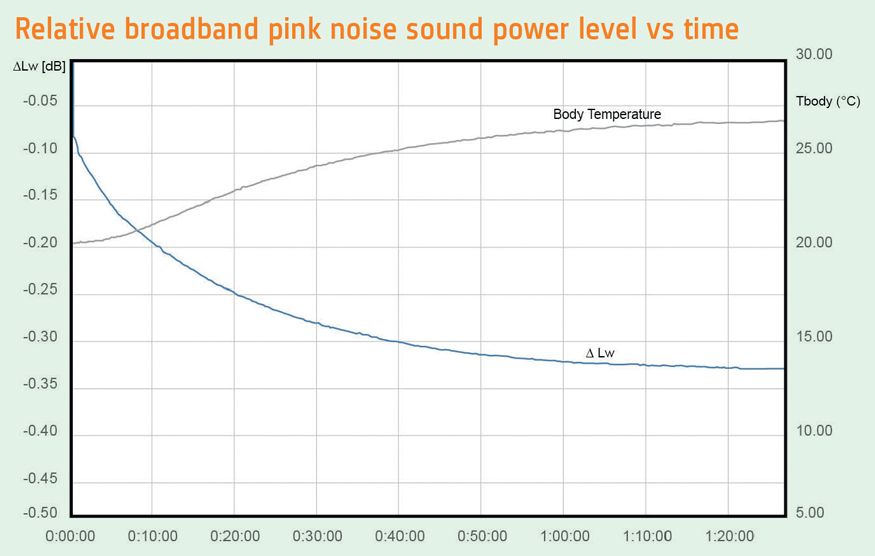Loudspeaker Directivity
The core requirement regarding sound sources for building acoustics and room acoustics is the sound directivity. The maximum deviation from the mean sound pressure in any direction as a function of frequency is specified in ISO 140 (building acoustics) and ISO 3382-1 (room acoustics).
Each standard has different limits, with ISO 3382-1 being somewhat stricter than ISO 140.
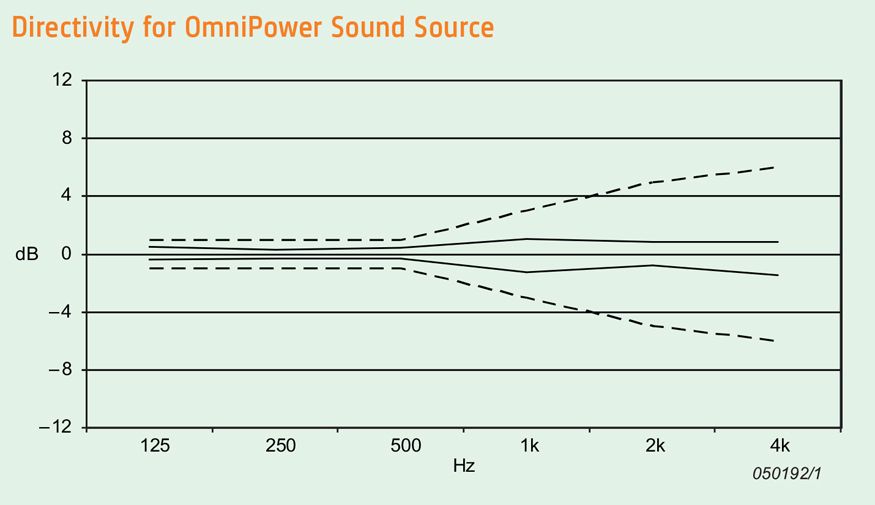
The directivity of a sound source is mainly determined by the shape of its enclosure, and to a lesser degree by its loudspeakers. The most uniformly built shapes are the regular polyhedral, or Platonic solids: tetrahedron, cube, octahedron, dodecahedron and icosahedron.
Dodecahedron Speaker Configuration
The dodecahedron, with its 12 faces, provides a good fit for the directivity requirements in the ISO standards. A relative of the dodecahedron is the icosidodecahedron, which has 12 pentagon-shaped faces and 20 triangular faces. These small triangular faces reduce the overall outer diameter and provide space for connectors, grips, threaded holes and rubber feet, resulting in a more ergonomic and aesthetically pleasing device. Although more difficult to construct than the dodecahedron, these advantages justify the choice of the icosidodecahedron for Type 4292-L.
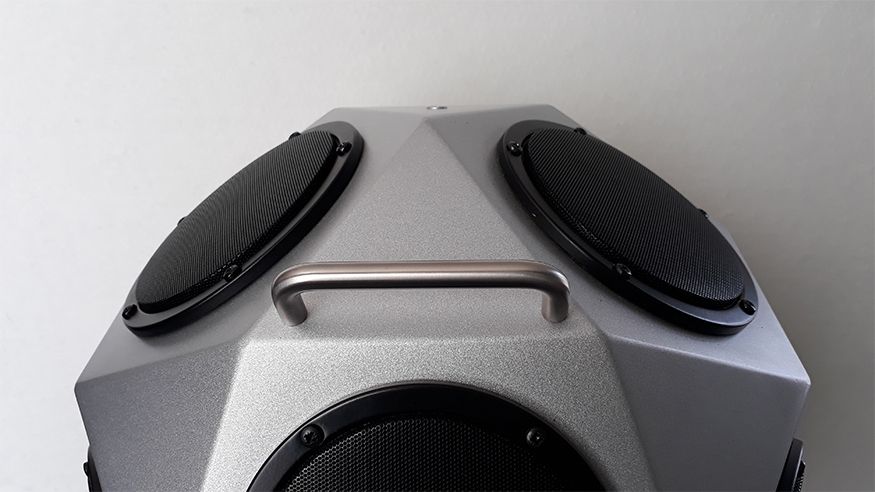 Grip Grip |
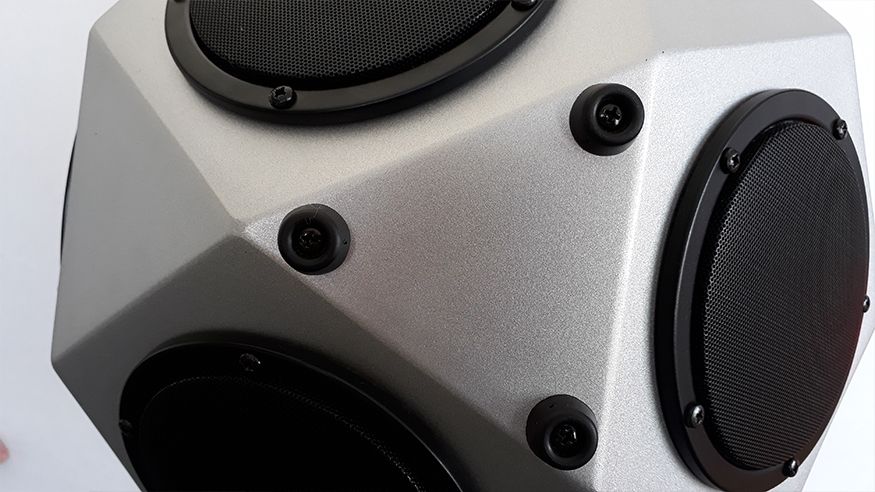 Rubber feet Rubber feet |
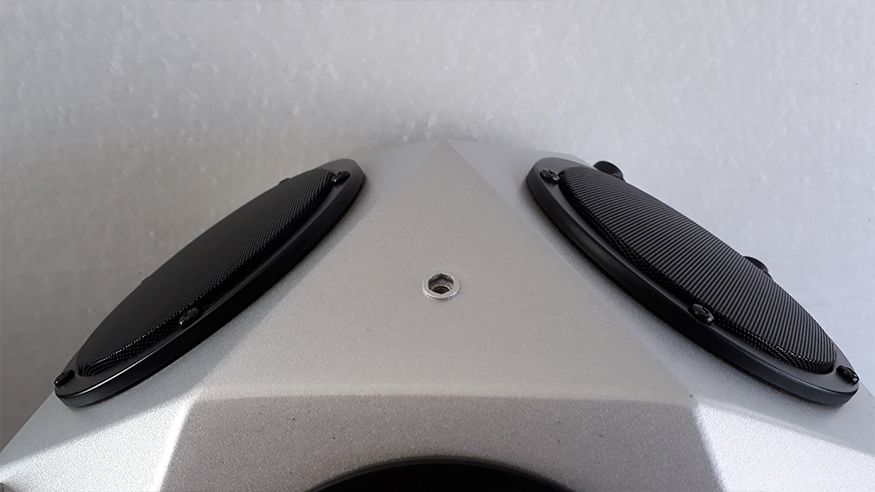 Mounting hole Mounting hole |
Speaker Frequency Range
The minimum required frequency range in 1/3-octave bands for ISO 140 is from 100 Hz up to 3150 Hz, optionally expanded at either end to the 50 Hz and 5000 Hz bands. The minimum range for ISO 3382-1 is the full octave bands from 125 Hz to 4 kHz, and for speech transmission index (STI) measurements, the 8 kHz full octave band is also required. The resulting range to cover all these standards and applications is 50 Hz to 10 kHz in 1/3-octave bands. To accomplish this, the source needs wideband loudspeakers. Adding a woofer for low frequencies can sometimes be useful, but this complicates the source and makes it non-concentric. Covering the full range with the 12 wideband loudspeakers is the preferred option.
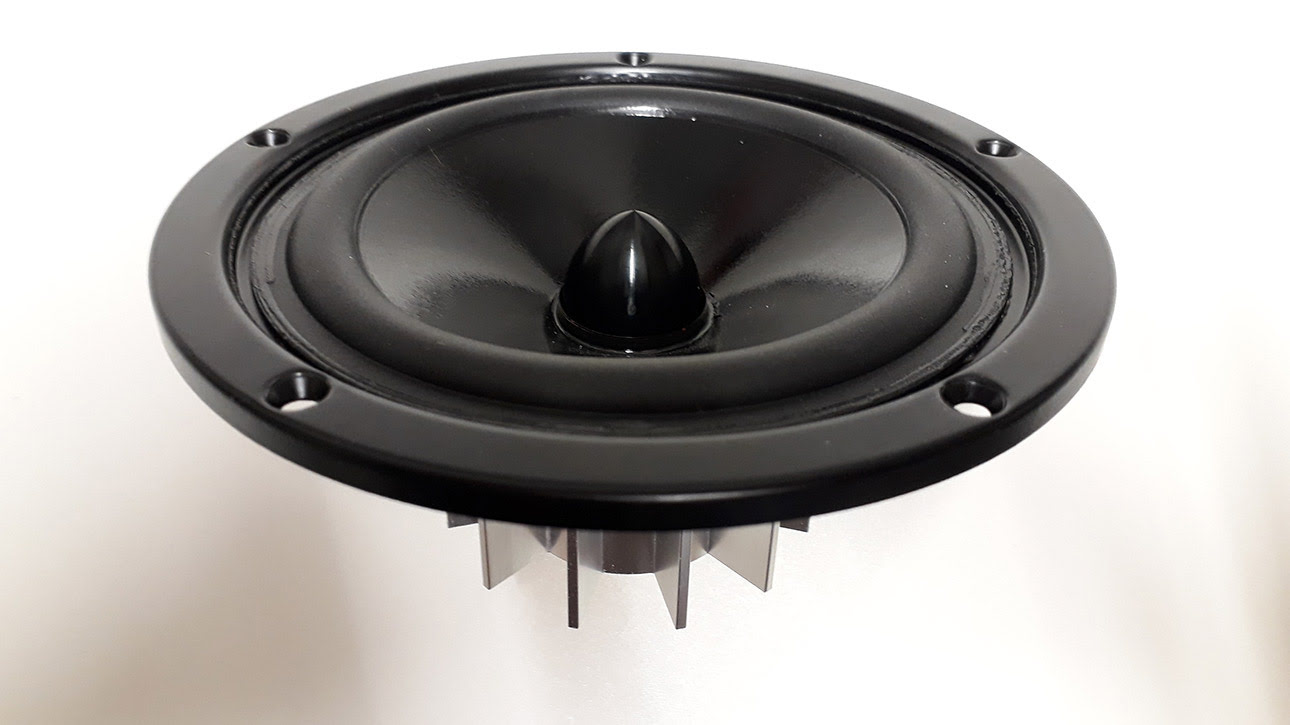
In addition to the range of the spectrum, ISO 140 also specifies that, in a given source room, adjacent 1/3-octave bands should not differ in level by more than 6 dB. This requirement cannot be guaranteed by the source alone, as it also depends on the acoustic properties of the room itself. Equalization of the source signal may therefore be required.
POWER AMPLIFIER TYPE 2734
The ‘eq’ noise signal in Brüel & Kjær’s Power Amplifier Type 2734 has been ‘pre-equalized’ for Type 4292-L, minimizing the chance that the level difference between adjacent bands exceeds 6 dB in real-world measurements.
Enhanced Stability
Although not specified in any of the standards, the stability of the output level and spectrum over time is a very important property and often overlooked. OmniPower Sound Source Type 4292-L is capable of handling high power for many hours with minimal changes to the spectrum and output level.
The cooling is determined by both the design of the individual loudspeakers as well as the construction of the sound source enclosure. OmniPower is equipped with loudspeakers that were developed specifically for this application. The lightweight neodymium magnets used in this loudspeaker are much smaller than the traditional ferromagnet which also means they have a much smaller surface area from which to radiate heat. A heatsink was added to remedy this problem while keeping the loudspeaker weight well below that of a traditional design. Additional self-cooling capacity was added by using a phase plug, which enables improved airflow around the voice-coil.
Eventually the heat radiated by the loudspeaker must reach the environment, and a metal enclosure is essential to transport heat energy from the inside of the enclosure to the outside. Type 4292-L uses aluminum to optimize weight and thermal conduction.
The first designs of the OmniPower Sound Source uncovered an interesting phenomenon that surprised even the loudspeaker manufacturer. The workmanship was such that some enclosures were completely airtight. As the air inside the enclosure heated up, the internal air pressure also went up. This in turn restricted the movement of the diaphragm, reducing the natural cooling of the voice-coil. At high power, this would quickly lead to a runaway temperature, stopped only by the voice coils burning out! This prompted the addition of a small vent to equalize the pressure inside and outside the source.
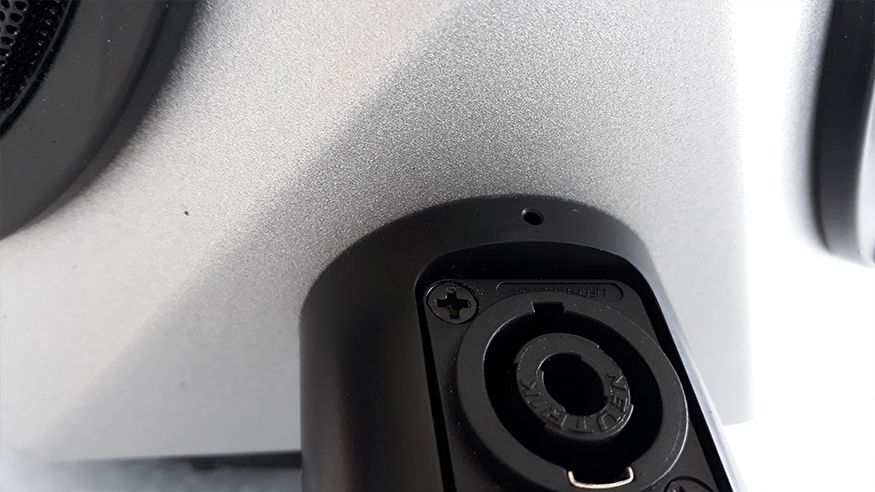
Sound Insulation Measurements
In general, for sound insulation measurements, very high output levels are desirable to ensure levels sufficiently above the background sound levels in the receiving room. This can place significant strain on the loudspeakers, which will heat up until thermal equilibrium is reached with the surroundings, or until the loudspeaker voice-coil melts.
Efficient cooling ensures that the loudspeakers reach thermal equilibrium as fast as possible after the initial voice-coil heating. The electrical resistance of the voice-coil rises with temperature, causing the acoustic output of the source to drop. This so-called compression happens very quickly, typically within 10 seconds after applying a high-power signal, at which point the output level may have dropped by approximately 0.1 dB. As the voice-coil continues to heat up until thermal equilibrium is reached, the drop in output power should be minimal, particularly during a measurement.
A Word On Maintenance
As with other measurement equipment, it is not only important that a sound source functions as specified when new, but also that it continues to do so after years of use. To this end, Brüel & Kjær offers a certification service for Type 4292-L. In the certification process, the source is first taken through a regular production test, where any repairs that may be needed are performed. It is then measured and checked for compliance to its specifications by an independent laboratory.

Abonnez-vous à notre Newsletter et recevez les dernières actualités en acoustique et vibrations



